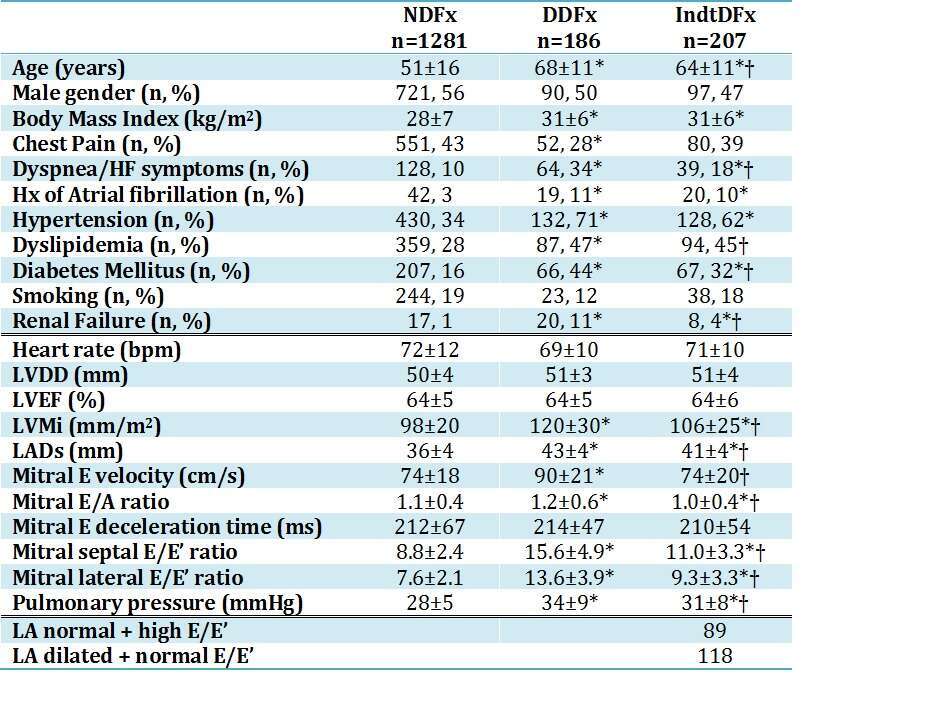
Clinical and Echocardiographic Characteristics of Patients in Sinus Rhythm, Normal Left Ventricular Function and Indeterminate Diastolic Function
2Cardiovascular institute, B Padeh Medical Center, Poriya
Background: Diastolic dysfunction (DDFx) is the major underlying mechanism of heart failure with preserved left ventricular ejection fraction (EF). Yet, guidelines directed echocardiographic diagnosis of DDFx in patients in sinus rhythm is challenging, and up to 25% of studies have undefinable diagnostic features of DDFx.
We aimed to describe the clinical and echocardiographic characteristics of patients with undermined diastolic function compared to patients with definite normal and abnormal diastolic function.
Methods: We found 1674 patients in our echocardiography database in sinus rhythm, EF≥45% without wall motion abnormalities, valvular, congenital heart diseases, cardiomyopathies or pulmonary disease. Patients were divided according to their lateral mitral E/E’ ratio and left atrial systolic diameter: normal DFx (Left atrial systolic diameter (LASd)<40mm, E/E’<10), DDFx ((LASd≥40mm, E/E’≥10) and indeterminate DFx (conflicting LASd diameter and E/E’ ratio).
Results: Table shows clinical and echocardiographic characteristics of the 3 groups. The DDFx group (n=186) and IndtDFx (n=207) were significantly different form NDFx (n=1281) in most of the demographics, cardiovascular risk factors, presentation and echocardiographic parameters. IndtDFx demonstrated intermediate parameter abnormalities, largely overlapping with DDFx. LASd and E/E’ were similarly associated with inability to determine diastolic function. Age, female gender, renal failure, E/E’ and pulmonary pressure were found to be independent predictors of heart failure symptoms (RR= 1.02, 1.5, 2.5, 1.1, 1.1, respectively, p <0.0001, r=0.35).
Conclusion: Clinically and echocardiographically patients with IndtDFx are more closely related to DDfx than to NDFx. Although LAd was abnormal in IndtDFx it was not predictive of heart failure symptoms. Further study is suggested to establish whether functional LA analysis can provide additional information over assessment of only its maximal size.

Powered by Eventact EMS